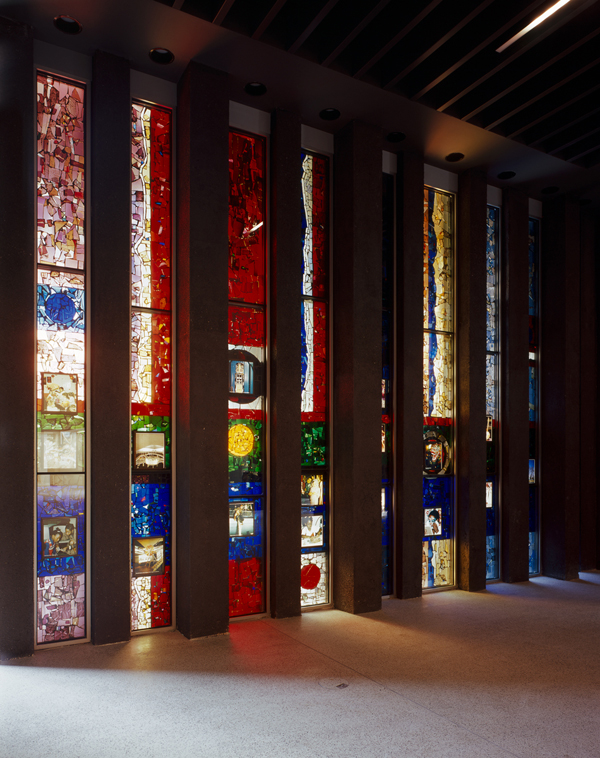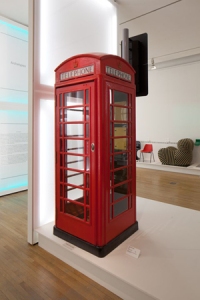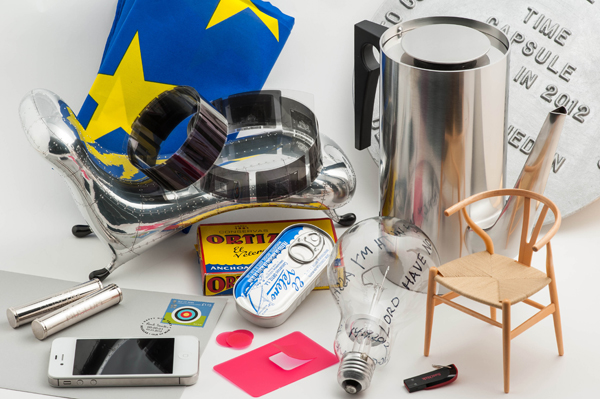
In Bermondsey. PICTURE: Nicolas Lysandrou/Unsplash

The Design Museum’s new home in Kensington finally opened this week and it’s already been getting some rave reviews, hence why, despite its freshness, we thought we’d mention it in our Treasures of London feature.
The museum, which moved to its new premises after 25 years in Shad Thames, now occupies the former Commonwealth Institute building, which dates from 1962 and was designed by Robert Matthew. The building has recently undergone a £83 million makeover with the interiors designed by architect John Pawson.
The new museum has three times the space of the previous premises and features the only collection in the UK devoted exclusively to contemporary design and architecture. At the heart of the building is the Designer Maker User exhibition which, as the museum’s first free permanent display, occupies the top floor of the museum, and includes more than 1,000 items of 20th and 21st century design. At its entrance can be found a wall featuring more than 200 items from 25 countries nominated by the general public including a Bible, Coca-Cola can and a £5 banknote.
Inside, the Designer section focuses on the thought-processes of designers and features a full-sized production of a gerberette used in the Richard Rogers-designed Centre Pompidou in Paris as well as models and images of the works of the late architect Zaha Hadid, David Mellor’s traffic lights, Kinneir and Calvert’s British road signage system and a full scale prototype for a new London Tube train designed by PriestmanGoode as well as Moulton bicycles and London Underground maps.
The Maker section, meanwhile, traces the evolution of manufacturing from Thonet bentwood cafe chairs and Model T Ford cars to robotic arms and 3D printing and includes objects at different stages of production – from tennis balls to the London 2012 Olympic Torch.
And in the User section, visitors will be led to explore the interaction between the consumer and brands that have become household names – Braun, Sony, Apple and Olivetti – as well as the impact of design on politics, fashion and music. Displays in the latter part include Gucci tennis shoes, the fashions of Vivienne Westwood and Christian Louboutin and the pioneering magazine The Face.

As many as 500,000 people are expected to visit the museum in its first year. Along with permanent displays, also unveiled this week was the new exhibition, Fear and Love, featuring 11 new installations by world leading designers. They include The Pan-European Living Room by architecture practice OMA, Room Tone by fashion designer Hussein Chalayan, Pittsburgh-based designer Madeline Gannon’s “mechanical creature” Mimus, and a series of death masks called Vespers created using 3D printing technology Neri Oxman.
And running until 19th February is the Beazley Designs of the Year, a celebration of design that promotes or delivers change, enables access, extends design practice or captures the spirit of the year past. Categories include architecture, digital, fashion, graphics, product and transport.
WHERE: The Design Museum, 224-238 Kensington High Street, Kensington (nearest Tube stations are Kensington High Street. Earl’s Court and Holland Park); WHEN: 10am to 6pm daily; COST: free (admission charges to special exhibitions); WEBSITE: http://designmuseum.org
PICTURES: Top – Gravity; Middle – Gareth Gardner; Bottom – Helene Binet. Courtesy The Design Museum.
• The 161st Boat Race is on this weekend and will once more see Oxford and Cambridge rowing crews battling it out in their annual contest on the Thames. The day’s schedule of festivities kicks off at noon at Bishop’s Park near the race’s starting point just west of Putney Bridge and at Furnivall Gardens near Hammersmith Bridge but the main highlights don’t take place until late in the afternoon – the Newton Women’s Boat Race at 4.50pm and the main event, the BNY Mellon Boat Race, at 5.50pm. The race runs along the Thames from Putney Bridge through to Chiswick Bridge with plenty of vantage points along the way. The tally currently sits at 78 to Oxford and 81 to Cambridge. For more information, including where to watch, head to http://theboatraces.org/.
• Prospective “Designs of the Year” are on display at the Design Museum in Shad Thames ahead of the announcement of awards in May and June. With the awards – handed out in six categories – now in their eighth year, the 76 designs on display include Google’s self-driving car, the Frank Gehry-designed Foundation Louis Vuitton in Paris and Asif Kahn’s experimental architectural installation Megafaces which debuted at the Sochi Olympics as well as Norwegian banknotes, a billboard that cleans pollutants from the air and a book printed without ink. Runs until 23rd August. Admission charge applies. For more, see www.designmuseum.org/exhibitions/designs-of-the-year-2015.
• On Now: Heckling Hitler: World War II in Cartoon and Comic Art. Showing at the Cartoon Museum in Bloomsbury, this exhibition explores how World War II unfolded through the eyes of British cartoonists. It features more than 120 original drawings and printed ephemera and while the focus is largely on those contained newspapers and magazines, the exhibition does include some sample materials from books, aerial leaflets, artwork from The Dandy and The Beano, postcards and overseas propaganda publications as well as some unpublished cartoons drawn in prisoner-of-war camps and by civilians at home (the latter on scrap paper from the Ministry of Food), and even a rare pin cushion featuring Hitler and Mussolini. Among the artists whose works are featured are ‘Fougasse’ (creator of Ministry of Information posters reminding the public that ‘Careless Talk Costs Lives’), William Heath Robinson and Joe Lee. The exhibition runs until 12th July. Admission charge applies. For more, see www.cartoonmuseum.org/exhibitions/current-exhibitions/heckling-hitler.
• On Now: Homes of the Homeless: Seeking Shelter in Victorian London. This exhibition at the Geffrye Museum in Shoreditch explores the places inhabited by London’s poor during the 19th and 20th centuries and brings them to life through paintings, photographs and objects as well as the retelling of personal stories and reports. Starting in the 1840s, the exhibition charts the problems faced by London’s poor and examines the dirty and cramped conditions of lodging houses, workhouses and refuges where they took shelter along with, for those even less fortunate, the streets where they slept rough before moving on to some of the housing solutions designed specifically to help the poor. Runs until 12th July. Admission charge applies. Running alongside the exhibition is a free display, Home and Hope – a collaborative exhibition with the New Horizon Youth Centre which explores the experience of young homeless people in London today. For more, see www.geffrye-museum.org.uk/whatson/exhibitions-and-displays/homes-of-the-homeless/.
Send all items for inclusion to exploringlondon@gmail.com
This version of the iconic British ‘institution’ – the red phone box – was designed by architect Sir Giles Gilbert Scott in 1924 (you may know him as the designer of the Battersea Power Station).
 Formally known as the K2 telephone kiosk, Scott’s design was selected after a competition organised by the Royal Fine Art Commission (there’s a wooden prototype of Scott’s K2 located under the entrance to the Royal Academy of Arts in Piccadilly – the location where it was originally positioned).
Formally known as the K2 telephone kiosk, Scott’s design was selected after a competition organised by the Royal Fine Art Commission (there’s a wooden prototype of Scott’s K2 located under the entrance to the Royal Academy of Arts in Piccadilly – the location where it was originally positioned).
The design featured a classical-looking dome (said to have been influenced by the work of architect Sir John Soane) which featured the royal crest of King George V (done in perforation, so it also provided ventilation). The phone box was made in cast iron and painted red (Scott had apparently suggested silver). From 1926 onwards, around 1,700 of the K2s – which weighed more than a ton – were deployed around London (very few were ever erected outside the city).
The surviving K2s – there are said to be slightly more than 200 – are now listed buildings.
The telephone box is a part of the Design Museum’s permanent collection which is currently held in two locations but from 2015 will be housed in a new purpose-built museum in High Street Kensington.
The box, which will be displayed on the museum’s top floor which will be dedicated to the display of 20th century artefacts, is currently featured in a special exhibition, Design Museum Collection: Extraordinary Stories About Ordinary Things, which runs at the museum’s current premises until January, 2015.
To further explore the Design Museum’s collection, you can download a free Design Museum Collection App for iPad app via iTunes.
WHERE: Design Museum, 28 Shad Thames (nearest Tube stations are London Bridge and Tower Bridge); WHEN: 10am to 5.45pm daily (last admission 5.15pm); COST: £11.85 adults/£10.70 concessions/£7.50 students (children under 12 are free); WEBSITE: www.designmuseum.org
 A selection of objects chosen by leading designers and architects including Sir Terence Conran, Sir Paul Smith, Zaha Hadid, and Norman Foster were buried within the foundations of the soon-to-be Design Museum in Kensington High Street earlier this month. The objects, which included everything from a miniature model of an 1949 Wish Bone Chair to an iPhone, a Cylinder Line Coffee Pot, a tin of anchovies and Tube maps, were placed within a time capsule which was buried as part of a ground-breaking ceremony for the new museum. Designed by John Pawson, the new Design Museum will be based within the converted interior of the former Commonwealth Institute Building. Expected to open in 2015, it will have three times as much space as the existing premises in Shad Thames, south east London. For more, see http://designmuseum.org.
A selection of objects chosen by leading designers and architects including Sir Terence Conran, Sir Paul Smith, Zaha Hadid, and Norman Foster were buried within the foundations of the soon-to-be Design Museum in Kensington High Street earlier this month. The objects, which included everything from a miniature model of an 1949 Wish Bone Chair to an iPhone, a Cylinder Line Coffee Pot, a tin of anchovies and Tube maps, were placed within a time capsule which was buried as part of a ground-breaking ceremony for the new museum. Designed by John Pawson, the new Design Museum will be based within the converted interior of the former Commonwealth Institute Building. Expected to open in 2015, it will have three times as much space as the existing premises in Shad Thames, south east London. For more, see http://designmuseum.org.
PICTURE: Dominic French.